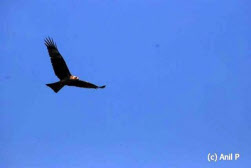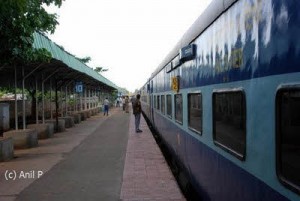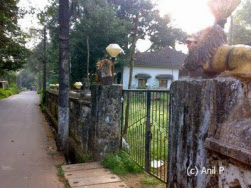On Travelling
I like the outdoors, the sunshine, the people, the meandering, the language, the streets, the colours, and the culture. Together, each of the elements combine to make travel an enterprise for the meandering wanderer, like me. By itself travel is not the passion, curiosity is. If you’re not prepared to wonder enough, you’ll not wander enough. The reverse is also true. I do not necessarily travel for fresh perspectives though in some instances it might well be the result of my travels. I travel because there’re places to be seen, experiences to be had, and history to be explored. India is a sum total of the legacies of its parts. So in some ways, even if unconsciously, as an Indian you do not truly own the country’s legacy handed down to you, without actually making the effort to travel to ‘receive’ it. Moreover, to seek the road for the unknown it promises, each traveller seeks promises unknown to him before he sets out for the road. I’m no different.
you’re not prepared to wonder enough, you’ll not wander enough. The reverse is also true. I do not necessarily travel for fresh perspectives though in some instances it might well be the result of my travels. I travel because there’re places to be seen, experiences to be had, and history to be explored. India is a sum total of the legacies of its parts. So in some ways, even if unconsciously, as an Indian you do not truly own the country’s legacy handed down to you, without actually making the effort to travel to ‘receive’ it. Moreover, to seek the road for the unknown it promises, each traveller seeks promises unknown to him before he sets out for the road. I’m no different.
On Choice of Places and Train Journeys
 Now that I write of my travels and illustrate them with pictures, the promise of the visual component is as much a key driver in choosing a place to visit as is the promise of its historical narrative. And there’s also the promise of the journey, the train journey. In addition to life on the street, I find Architecture, History, Archaeology and Wildlife fascinating. I usually look up places I haven’t been to before, places I’ve read the history about. I also check the routes for stations the train will stop at, along the way. While I might not get off my train journey midway to explore stations along the way, I’m partial to stations that ring bells in my head from my reading of history of the region, from stories I read or heard about when growing up. Passing these stations along the way helps me fill in historical narratives that define my destinations. The railway stations are dots that fill in the trail ending at the destination the traveller is headed to. Travelling by the Hazarduari Express from Kolkata to Murshidabad on the Sealdah – Lalgola rail line of the Eastern Railway recently, I sought the moments the train passed Plassey and Berhampore as eagerly as I did the moment I alighted at Murshidabad, the erstwhile capital of the Nawabs of Bengal. The Murshidabad narrative is incomplete without Plassey, and the Plassey narrative is incomplete without Berhampore. The Battle of Plassey in 1757 is as integral to the narrative of the Nawabs of Bengal, as it is to that of the East India Company; the year it dethroned Siraj Ud Daulah from Murshidabad before installing his betrayer, Mir Jaffar as the Nawab, opening India to British Colonial rule. Subsequently Berhampore saw action in the Sepoy Mutiny of 1857 as sepoys sought to overthrow the British hold they’d so spectacularly gained at the Battle of Plassey. While I did not get off at Plassey and Berhampore, the stations expanded into imaginary narratives in the landscape outside the window as the train hurtled past, on its way to Murshidabad. Silences gave way to the desperation of the Nawab, as Mir Jaffar failed to move against the British. If one tried a little, it would seem possible to turn the clock back to that defining moment from 1757. So when I stepped through the graves of the Mir Jaffar family at the Jaffraganj Cemetry I was reminded of where it all began, Plassey. And the station and the landscape returned to me with renewed vividness among the graying headstones that lay in silence across the street from the Deori, where Siraj Ud Daulah is said to have been murdered. Travel is part imagination, part reality.
Now that I write of my travels and illustrate them with pictures, the promise of the visual component is as much a key driver in choosing a place to visit as is the promise of its historical narrative. And there’s also the promise of the journey, the train journey. In addition to life on the street, I find Architecture, History, Archaeology and Wildlife fascinating. I usually look up places I haven’t been to before, places I’ve read the history about. I also check the routes for stations the train will stop at, along the way. While I might not get off my train journey midway to explore stations along the way, I’m partial to stations that ring bells in my head from my reading of history of the region, from stories I read or heard about when growing up. Passing these stations along the way helps me fill in historical narratives that define my destinations. The railway stations are dots that fill in the trail ending at the destination the traveller is headed to. Travelling by the Hazarduari Express from Kolkata to Murshidabad on the Sealdah – Lalgola rail line of the Eastern Railway recently, I sought the moments the train passed Plassey and Berhampore as eagerly as I did the moment I alighted at Murshidabad, the erstwhile capital of the Nawabs of Bengal. The Murshidabad narrative is incomplete without Plassey, and the Plassey narrative is incomplete without Berhampore. The Battle of Plassey in 1757 is as integral to the narrative of the Nawabs of Bengal, as it is to that of the East India Company; the year it dethroned Siraj Ud Daulah from Murshidabad before installing his betrayer, Mir Jaffar as the Nawab, opening India to British Colonial rule. Subsequently Berhampore saw action in the Sepoy Mutiny of 1857 as sepoys sought to overthrow the British hold they’d so spectacularly gained at the Battle of Plassey. While I did not get off at Plassey and Berhampore, the stations expanded into imaginary narratives in the landscape outside the window as the train hurtled past, on its way to Murshidabad. Silences gave way to the desperation of the Nawab, as Mir Jaffar failed to move against the British. If one tried a little, it would seem possible to turn the clock back to that defining moment from 1757. So when I stepped through the graves of the Mir Jaffar family at the Jaffraganj Cemetry I was reminded of where it all began, Plassey. And the station and the landscape returned to me with renewed vividness among the graying headstones that lay in silence across the street from the Deori, where Siraj Ud Daulah is said to have been murdered. Travel is part imagination, part reality.
On Places Seen and the Memories
My time travelling can be split into two phases: Student and post-Student days. I was actively involved with Worldwide Fund for Nature (WWF) activities for several years and would volunteer as Wildlife Instructor with WWF-India during college vacations, assisting them in conducting wildlife camps in Goa, primarily helping with nature trails for participants. Subsequently I favoured visiting wildlife sanctuaries, sometimes as a part of WWF – India Wildlife Programs, primarily for trekking and camping usually lasting five days each. I travelled across Maharashtra, Madhya Pradesh, Karnataka, Tamilnadu, Kerala and Goa, mostly trekking in wildlife sanctuaries of the states. Travelling on discounted student fare would involve long train journeys, sometimes in General compartments, but it greatly added to the thrill of train journeys. Back home in Goa, cycling trips with friends to wildlife sanctuaries, riding the wind on isolated stretches of roads combined a love for nature and cycling. I missed taking pictures at that time for want of equipment, if a single film roll in a point and shoot camera and expected to last five days can be called adequate. So, much that might’ve been interesting to see, is now lost or exists only in my memories. Much later, as I took up photography to document my travels, I turned my attention to India’s history, cultural and otherwise – travelling through Maharashtra, Karnataka, Goa, Andhra Pradesh, Tamilnadu, Kerala, Madhya Pradesh, Rajasthan, West Bengal, Uttar Pradesh and Delhi. More remains. Even then, among the more memorable moments, are my travels through a Gond tribal village in Maharashtra, passing their elaborate burial grounds before exploring a fossil site for fossils, struggling knee deep in the slush and awed by life trapped in its entirety through millions of years. Later, on ascending the large mound that archaeologists were excavating at the ancient site of Ramsar near Ramtek, the ruins of partially exposed Buddhist Stupas made for a sobering thought. Here I was, witnessing the possibly exact moment those who ceased to exist, left behind or escaped from centuries ago, to be sealed by time, and unknown to any, as the earth reclaimed it until this very moment. I might as well have been at a revelation. Standing there atop the hill, it was as if I was entrusted with continuing the legacy broken centuries ago by unknown events even though the intervening period of civilization was essentially lost to time. And there I was, standing over pots and other implements ‘they’ left behind, seeing them in the same position ‘they’ left behind. Who were the ‘they’? Intrigued by the possibility that we may never know for sure, my memory of that moment from that trip is frozen in the question – Who were the ‘they’? At times, it is the unanswerable we seek on our travels.
(WWF) activities for several years and would volunteer as Wildlife Instructor with WWF-India during college vacations, assisting them in conducting wildlife camps in Goa, primarily helping with nature trails for participants. Subsequently I favoured visiting wildlife sanctuaries, sometimes as a part of WWF – India Wildlife Programs, primarily for trekking and camping usually lasting five days each. I travelled across Maharashtra, Madhya Pradesh, Karnataka, Tamilnadu, Kerala and Goa, mostly trekking in wildlife sanctuaries of the states. Travelling on discounted student fare would involve long train journeys, sometimes in General compartments, but it greatly added to the thrill of train journeys. Back home in Goa, cycling trips with friends to wildlife sanctuaries, riding the wind on isolated stretches of roads combined a love for nature and cycling. I missed taking pictures at that time for want of equipment, if a single film roll in a point and shoot camera and expected to last five days can be called adequate. So, much that might’ve been interesting to see, is now lost or exists only in my memories. Much later, as I took up photography to document my travels, I turned my attention to India’s history, cultural and otherwise – travelling through Maharashtra, Karnataka, Goa, Andhra Pradesh, Tamilnadu, Kerala, Madhya Pradesh, Rajasthan, West Bengal, Uttar Pradesh and Delhi. More remains. Even then, among the more memorable moments, are my travels through a Gond tribal village in Maharashtra, passing their elaborate burial grounds before exploring a fossil site for fossils, struggling knee deep in the slush and awed by life trapped in its entirety through millions of years. Later, on ascending the large mound that archaeologists were excavating at the ancient site of Ramsar near Ramtek, the ruins of partially exposed Buddhist Stupas made for a sobering thought. Here I was, witnessing the possibly exact moment those who ceased to exist, left behind or escaped from centuries ago, to be sealed by time, and unknown to any, as the earth reclaimed it until this very moment. I might as well have been at a revelation. Standing there atop the hill, it was as if I was entrusted with continuing the legacy broken centuries ago by unknown events even though the intervening period of civilization was essentially lost to time. And there I was, standing over pots and other implements ‘they’ left behind, seeing them in the same position ‘they’ left behind. Who were the ‘they’? Intrigued by the possibility that we may never know for sure, my memory of that moment from that trip is frozen in the question – Who were the ‘they’? At times, it is the unanswerable we seek on our travels.
On India
The diversity is India’s biggest plus. If not for the diversity of communities that populate and characterize India we would not have near so much richness, be it languages, social customs and practices, clothing, festivals, architecture, street character or even the behavioural aspects unique to communities. Follow historical or cultural threads in exploring India, and connect the dots in the narratives usually expected to be characterized by monuments left behind. Monuments are mere landmarks, signposts in time. Bereft of their contexts they will stand like lifeless exhibits in a museum. Seek their contexts where they might exist. Their contexts are more likely to exist in the old neighbourhoods around, where if you’re lucky you could imagine the gaps in narratives that might then flow smoothly to include the monuments you traveled to see. In short try and explore history’s streets.
On Street Travelogues
On my travels streetside, it is the diversity in the ordinariness of things that I find captivating. In other words, it is differences in the ‘same’ thing that makes my traveling experience interesting. And it is in the streets that much of the different ‘same’ resides. It could be something as simple as the differences in the dialects of Hindi from place to place or how buffaloes I saw in Varanasi are so different from those I see in tabelas in Andheri. Or how houses built along narrow streets in old neighbourhoods differ from place to place. In some places, homes will open into the street, elsewhere the doors will be set behind porches, in still others windows open onto the street, but not doors. So as I wander along I might subconsciously observe the people to see if I can relate them with how their homes open onto the street. Similarly, roadside temples will tell of religious inclinations in the neighbourhood, and even indicate practices. If you know your country’s cultural history well, you might be able to anticipate the neighbourhood activity centered around the religious place. And meandering along there are photo opportunities to be had. In essence all streets are the same everywhere. But it is the different ‘same’ that sets one street apart from the other. Suffice to say if one walks through the street as opposed to walking along the street there’s just the chance you might miss out on the different ‘same’, reducing each street to a copy of the other. The next time, walk along.
On Travel Narratives
I do not consider myself as a travel writer. I’m essentially a traveller who writes, not a writer who travels. Most importantly, in writing of my travels I relive them all over again, every moment coming alive as I seek words and pictures to illustrate them. This is the key reason I write for in as much as I also write so I can share my experiences with anyone who cares to read my blog. We connect not as human beings but around shared experiences that we can relate to as human beings. And since travel is among the most primal of experiences common to humans, travel narratives are easy to connect with for the essential humanity that’s inherent to travel of any kind. For its sheer diversity I feel India is possibly the most poorly documented country. Take away its recorded history and what do you have of its pulse? Very little! As bloggers here’s an opportunity to fill the gaps in the narratives. It’s a challenge as well as an opportunity to make a contribution to keeping its legacy of the street alive. Neither seems to have many Indian takers for it, atleast as of now. So, the opportunity to tell of an India other than the Taj Mahal, or the palaces of Rajasthan, or the resorts on the beaches of Goa and the like is an added motivation to blog. In writing of a trip I keep myself out of my travel narratives, for it is easy to jump straight in and admire the splash you create in your narrative, essentially getting the experience to revolve around you instead of the place. I also avoid bringing in too much history into my blog posts, focusing instead on ‘taking’ the reader along.
[facebook]share[/facebook] [retweet]tweet[/retweet]



